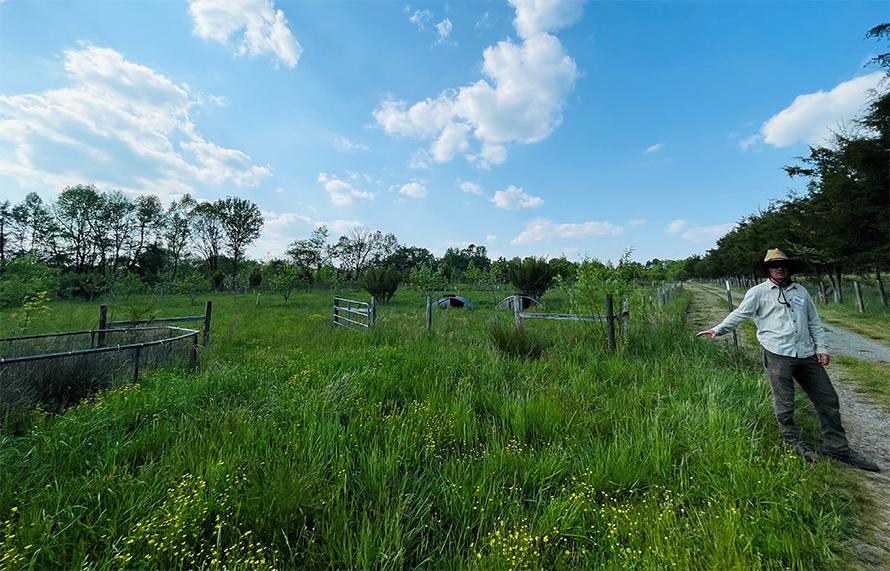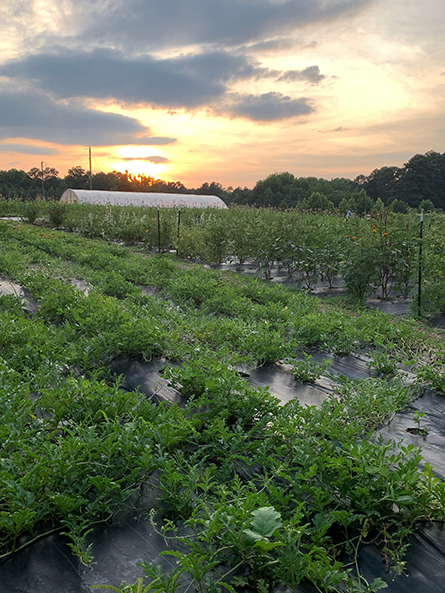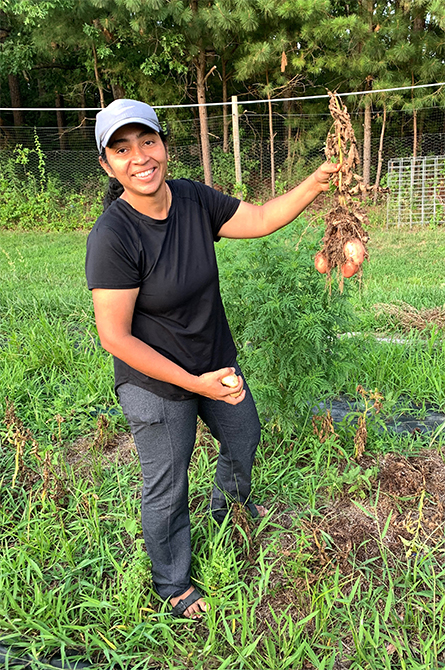
Regenerative agriculture: A boost for soil health
It is not an exaggeration to say that humans owe their existence to healthy soil. An unknown writer once said, “Man — despite his artistic pretensions, his sophistication, and his many accomplishments — owes his existence to a six-inch layer of topsoil and the fact that it rains!”
Soil is fundamental to agriculture, providing a global supply of food and raw materials for industry. It also can be an important tool in the fight against climate change. According to Jo Handelsman, director of the Wisconsin Institute for Discovery at the University of Wisconsin–Madison, there is three times as much carbon in soil worldwide as is in the atmosphere. She said, “It can be an enormous repository of carbon.”
Currently, soil is under threat globally. Over the past few centuries, conversion of grasslands, peatlands and forests to agricultural land and pastures; urbanization; population growth; and climate change have led to unprecedented erosion and reduced soil fertility. The soil needs our help — and some farmers have begun to take action. Experts say that much more must be done to protect this fragile resource.
Handelsman said, “Soil is eroding much faster than it is being made. The average erosion rate in the US is 5 tons per acre per year. Soil is made at 1/10th to 1/100th of that rate, and the equation is not sustainable.”

Duncan Cameron, a professor of soil and plant biology at the University of Sheffield, said, “A healthy soil has a breadcrumb-like structure, is dark brown or black in color (indicative of melanin and rich carbon content), and has an earthy wholesome smell produced by beneficial organisms.” In contrast, degraded or unhealthy soil is dry and sandy, lacking structure and biodiversity. Degraded soils have reduced carbon content, cannot filter water effectively and do not support high crop yields.
According to a 2015 report by the United Nations Food and Agriculture Organization and the Intergovernmental Technical Panel on Soils, an estimated 90% of Earth’s soils could be degraded by 2050 without any protective measures. Cameron said, “During my lifetime, we have lost a third of agriculture soils to erosion and degradation. The trends are continuing, and we haven’t learned our lesson.”
Those trends could have disastrous impacts on agriculture, food security and climate management. Handelsman said, “Soil degradation can generate greenhouse gases, and that’s a problem. If soil cycles are driven in that direction, we can release a lot of carbon into the atmosphere.”
Large-scale agricultural and land management practices are critical factors leading to soil degradation. Cameron said that intensive agriculture is analogous to in-field hydroponics and treats the soil as an inert medium holding the plants up. He said, “Total inversion plowing turns the soil to a significant depth and exposes it to the atmosphere, releasing carbon. It breaks the structure of the soil, which is a living, breathing ecosystem. When you destroy the soil to the scale at which intensive agriculture does, the natural processes are disrupted, making the soil incredibly vulnerable to erosion.”
Plowing is not the only problem. Soil often is left barren between crops, promoting erosion, and excessive use of pesticides leads to the loss of beneficial soil organisms. Improper irrigation leads to soil salinification.

are putting nutrients back into the soil of this former tobacco farm.
But there is hope for a healthier relationship between agriculture and soil. Cameron said, “The regenerative agriculture movement is the solution. It is a pragmatic framework to farming with the lowest possible footprint.” Many smaller scale farmers have already adopted sustainable farming methods focused on soil health. There are also several large corporations that support regenerative agriculture practices in their operations, including PepsiCo, Walmart, GM, Unilever and Microsoft.
Meredith Leight, the owner of Granite Springs Farm in Pittsboro, North Carolina, has used regenerative farming techniques for the past 13 years. “Our agricultural practices can help mitigate climate change — the more carbon we can keep in the soil, the better it is. It is fascinating that the very practices that help us improve our food and make it more nutritious are the same practices that can help mitigate climate change — it is a no-brainer!” said Leight. At her farm, she adopts minimum tillage, cover cropping and liquid compost to add nutrients to the soil.
Tom Saile, the farm manager at Good Hope Farm in Cary, North Carolina, said, “Conventional agricultural practices often involve the addition of chemical inputs, growing the plant and taking it away. Nothing is done to regenerate and rebuild the soil, resulting in nutrient depletion.”
At Good Hope Farm, a historic homestead, a century of tobacco cultivation severely had depleted the soil of organic matter, biodiversity and critical nutrients such as nitrogen and phosphorus. With techniques similar to Leight’s, Saile and his team are transforming the depleted sandy soil into fertile soil teeming with life. He said, “We are repeatedly putting nutrients back in the soil. Truly, the only sustainable way is to work with nature to grow our food.”
Bobby Tucker, the owner of Okfuskee Farms, is a regenerative sheep farmer and a strong proponent of holistic land management. Tucker’s sheep build soil health through rotational grazing. He packs them tightly in a strip of land where they feed on the plants, and their waste serves as an excellent soil amendment. Tucker said, “What drives me is creating more wildlife and a better environment for the critters. What’s happening below the ground is as important as what’s happening above!”
Handelsman said that currently, 30% of agricultural land in the US is no-till. She said, “We need to double that if we are serious about our soil.” According to her, larger farms are well-positioned to adopt regenerative practices. “They have the resources. The initial costs of the transition are made up in improved soil health and yield.”

at Good Hope Farm.
To speed up the transition, governing bodies must monitor soil resources closely and incentivize carbon-sequestering farming practices. Several agricultural agencies worldwide have launched programs to promote soil health. For example, the U.K.’s Healthy Soil, Healthy Food, Healthy People, or H3, program is a research consortium that aims to transform fundamentally the UK food system by focusing on the natural environment from the ground up. In Austria, the Humus Program of the Ökoregion Kaindorf awards farmers a success fee for improving their soil’s organic content over time. The United States Department of Agriculture offers the Environmental Quality Incentives Program and the Conservation Stewardship Program to farmers and ranchers to promote soil health practices.
Cameron believes policies and market forces eventually will increase the adoption of sustainable farming practices. In the meantime, individuals can contribute to soil health locally.
Leight said that the collective effort of individuals growing a small amount of their total food sustainably could go a long way in de-stressing the environment, reducing transportation costs and preventing soil degradation in stressed lands.
“We also need to waste less food and relieve pressure on the agriculture system,” Cameron said. According to the EPA, food constitutes 22% of solid municipal waste, and its decomposition in landfills increases greenhouse gasses in the atmosphere. Composting is a sustainable way of recycling food scraps and leaves into a nutrient-rich and valuable soil amendment. It is indeed a complete circle: The products originating from the soil return to the Earth to benefit it.
Finally, demand for food grown with soil health in mind can add up to promote better agricultural practices. Saile said, “Smart choices and consumer education are key. Your dollar is your vote for something that is sustainably produced. Building a local food system is our best strategy — get in touch with your farmers, and support the individuals who grow food sustainably.”
It can take up to 1,000 years to produce 2-3 centimeters of topsoil. Venture out, grab a handful of soil, feel the texture and see the life within! Let’s all collectively build our soil — one particle at a time.
Soil’s many services
According to the Food and Agriculture Organization of the United Nations, soil provides many ecosystem services, including:
- Carbon sequestration: Soil can be a powerful agent to mitigate climate change. It sequesters carbon via the carbon cycle, in which organisms remove carbon dioxide from the atmosphere and store it in the soil. The most stable carbon pool is humus, or decomposed organic material, that stays in the deeper layers for centuries to millennia.
- Food security: Soil and agriculture are closely related. Humans and other terrestrial organisms depend on soil for their nourishment.
- Water quality: Soil biota regulates water retention and leaching of nutrients by nutrient cycling. For example, earthworms and ants are engineers and bioturbators, as they burrow into the soil and improve water filtration and retention.
- Biodiversity: Soil is one of the most significant biodiversity reserves; a handful of soil may contain 10 million to 100 million microbes, including bacteria, viruses, worms, fungi and more.
- Human health: Studies suggest that soil biodiversity impacts human health by boosting the nutrient content of our food and modulating our immune response. Well-fed plants lead to well-fed humans.
- Provisional services/raw materials: Soil provides the biomass required for raw materials such as wood, fiber and biofuel used to produce numerous goods.
Enjoy reading ASBMB Today?
Become a member to receive the print edition four times a year and the digital edition monthly.
Learn moreGet the latest from ASBMB Today
Enter your email address, and we’ll send you a weekly email with recent articles, interviews and more.
Latest in Science
Science highlights or most popular articles

The science of staying strong
Muscles power every movement, but they also tell the story of aging itself. Scientists are uncovering how strength fades, why some species resist it and what lifestyle and molecular clues could help preserve muscle health for life.

Bacteriophage protein could make queso fresco safer
Researchers characterized the structure and function of PlyP100, a bacteriophage protein that shows promise as a food-safe antimicrobial for preventing Listeria monocytogenes growth in fresh cheeses.

Building the blueprint to block HIV
Wesley Sundquist will present his work on the HIV capsid and revolutionary drug, Lenacapavir, at the ASBMB Annual Meeting, March 7–10, in Maryland.

Gut microbes hijack cancer pathway in high-fat diets
Researchers at the Feinstein Institutes for Medical Research found that a high-fat diet increases ammonia-producing bacteria in the gut microbiome of mice, which in turn disrupts TGF-β signaling and promotes colorectal cancer.

Mapping fentanyl’s cellular footprint
Using a new imaging method, researchers at State University of New York at Buffalo traced fentanyl’s effects inside brain immune cells, revealing how the drug alters lipid droplets, pointing to new paths for addiction diagnostics.

Designing life’s building blocks with AI
Tanja Kortemme, a professor at the University of California, San Francisco, will discuss her research using computational biology to engineer proteins at the 2026 ASBMB Annual Meeting.

